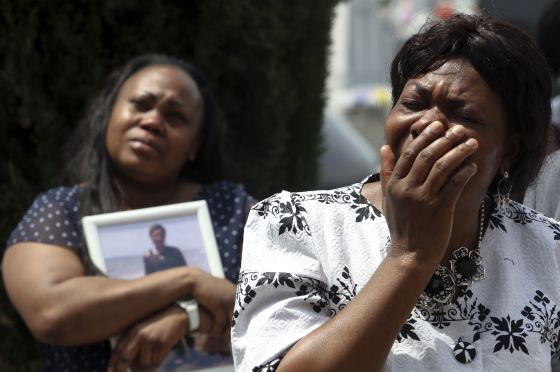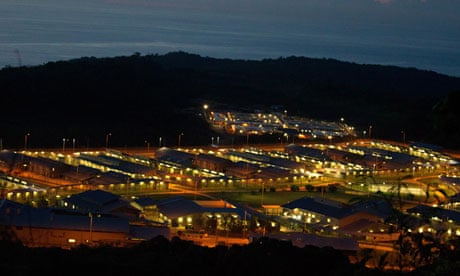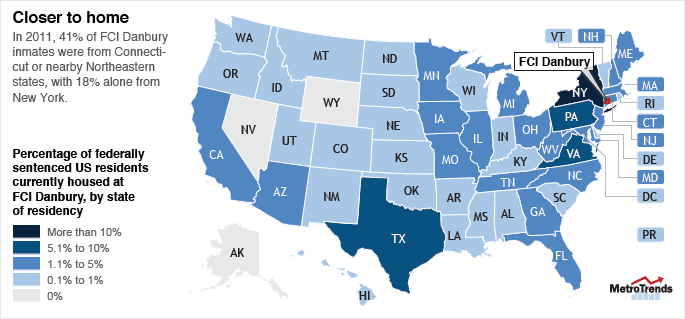 Samba Martine died, or was killed, on December 19, 2011, in the Aluche immigrant detention center in Madrid. This week, a Spanish court ordered her case to be reopened, stating that Martine’s death “could have been avoided.” That’s putting a fine point on it. Samba Martine was killed. She was killed by the Spanish government. She was killed by a global immigration detention gulag that has little to no rules, even less enforcement of the few rules it has, almost no accountability, and so little transparency as to be opaque. Except to the prisoners who continue to die … avoidably.
Samba Martine died, or was killed, on December 19, 2011, in the Aluche immigrant detention center in Madrid. This week, a Spanish court ordered her case to be reopened, stating that Martine’s death “could have been avoided.” That’s putting a fine point on it. Samba Martine was killed. She was killed by the Spanish government. She was killed by a global immigration detention gulag that has little to no rules, even less enforcement of the few rules it has, almost no accountability, and so little transparency as to be opaque. Except to the prisoners who continue to die … avoidably.
Here’s one version of Samba Martine’s story, as presented last year to a European Parliament Commission: “On 19 December 2011, a Congolese citizen, Samba Martine, died at the Aluche immigrant detention centre in Madrid. According to the Spanish Ombudsman’s 2012 annual report, her death was due to a lack of communication between institutions, which meant that she was not given the right treatment as someone with the human immunodeficiency virus (HIV). The immigrant held at Aluche had been diagnosed as HIV-positive at the Melilla temporary detention centre for immigrants but was transferred to the Aluche immigrant detention centre in Madrid without the latter centre being given any information whatsoever about her health status. This meant that at Aluche she was diagnosed with different illnesses and the centre’s doctors treated her on the basis of the different diagnoses without realising that she was HIV-positive, which consequently led to her death … The case of Samba Martine shows that the lack of coordination between the Aluche immigrant detention centre and the Melilla temporary detention centre for immigrants led to a diagnostic error which meant that she was not given the essential treatment for her illness, which indirectly caused her death. In addition to this case, there is the case of Idrissa Diallo and many other immigrants who have lost their lives in immigrant detention centres in Spain, suggesting that human rights … are being systematically violated.”
Samba Martine did not die of a `lack of coordination’. She was killed. She was killed by a program that targets immigrant women, and especially African women.
Samba Martine was held at Aluche for 38 days. From the day she arrived to the day she died, she complained of severe headaches, perineal irritation, stomach pains, and more. She went to the on-site medical facility, such as it is, and was given little to no treatment. Finally, the pain was so severe, they decided to send her to the hospital, only after debating whether to send her in a police car or ambulance. Hours later, Samba Martine died, alone, in pain.
Who died that night? 3106. A number, not a person. Cause? Cryptococcal infection … the second most common AIDS-defining illness in Africa. What crime did she commit? None. `Officially’, Aluche isn’t a prison. In fact, it’s worse. Next to Aluche, standard Spanish prisons look almost decent.
Samba Martine is not an exception. The notorious CIE, the Centro de Internamiento de Extranjeros, is filled with Sambas. Women, and especially African women, suffer particular indignities and violence. A litany of `failures’ and `omissions’ will now ensue. The prison clinic is private. The prisons don’t communicate with one another. The prison staff is inadequately trained. None of these describe what happened.
Samba Martine was not failed by anyone. She was killed. She was killed by the State, in this instance Spain, and she was killed by the world that sustains black holes, militarized borders on every corner, and dispensable surplus populations.
On June 2, 2012, six months after she died, Samba Martine was buried in a cemetery in Madrid. Her mother, Clementine, came from Canada. She knew her daughter’s death was neither accident nor failure. It was murder. She knew. We all killed Samba Martine.
(Photo Credit: elpais.com)






